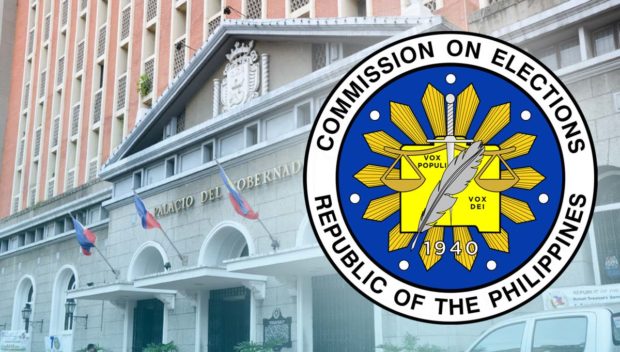Comelec explains move to receive Cha-cha drive signatures
MANILA, Philippines — The Commission on Elections (Comelec) on Monday defended its move to accept signature sheets for a people’s initiative to amend the 1987 Constitution, even without a formal petition yet.
Comelec chairman George Erwin Garcia made the pronouncement in response to an election law expert who told the election body to stop receiving the documents containing the signatures, calling it a “waste of time and paper.”
Garcia explained that Comelec is acting in accordance with Resolution No. 10650.
It also prevents bringing the 6 million or 10 million signatures to the main Comelec office, which he said would be much more costly.
“Isipin niyo dadalhin dito tapos hindi namin ive-verify? Ang aalamin lang namin sufficiency in form and substance, tapos ‘pag sinabi na sufficient ibabalik namin ‘yung 6 million sa iba’t ibang bayan? mas magastos,” Garcia told reporters in a chance interview.
(Imagine if they bring it here, and we do not verify it? We would only need to check sufficiency in form and substance. Once deemed sufficient, we would then have to return the 6 million to various towns. It would be more costly this way.)
“For practicality and administrative [reasons] siguro ‘yung kadahilanan kung bakit inuna muna na isubmit ‘yung mga dokumento. In the first place pag sinubmit naman ‘yon wala pang kwenta sa’tin ‘yon,” he added.
(For practicality and administrative reasons, perhaps that’s why they prioritized submitting the documents first. In the first place, when those are submitted, they don’t hold any significance for us yet.)
Garcia said accepting the documents containing the signatures is only part of its ministerial duty, and preliminaries of the process.
He clarified that while there is still no formal petition filed before Comelec, it is not within its jurisdiction to assume that there is indeed a people’s initiative.
“So kung may isu-submit sa’min, ‘yun ay katungkulan namin base sa guidelines. Kung wala sa rules o guidelines yan ba’t naman namin tatanggapin ang dagdag trabaho sa’min?” said Garcia.
(So if something is submitted to us, it becomes our responsibility based on the guidelines. If it’s not in the rules or guidelines, why would we accept additional work?)
What happens upon filing of a formal petition?
Once a formal petition has been filed, Garcia said the Comelec would then proceed to determine if it has been submitted complete with the required attachments.
Such requirements, he said, include the number of the actual voting population, and the number of signatures required to be collected — at least 3 percent of each of the 254 legislative districts in the country — certified by the Election Records and Statistics Department (ERSD).
Comelec would then verify if the petition is “sufficient in form and substance,” meaning, if it clearly indicates the provision of the Constitution they want to be amended.
“‘Yun po ang kailangan makita namin, ministerial din po ang duty namin kasi checklist lang ‘yon eh, ‘pag nakita naming may wala, dismissed,” said Garcia.
(That is what we need to ascertain. Our duty is ministerial because it’s just a checklist; if we find something missing, it will be dismissed.)
Meanwhile, once verified that it has completed the requirements, the Comelec would then proceed to verifying the signatures one by one.
“Kung makita po ang isang distrito — [halimbawa] five percent ang binigay — na sa kakabawas ng kakabawas dahil hindi naman pala pirma ng mga botante ‘yun ay naging 2 percent na lamang ay dismissed na po ang petisyon. Dahil dapat lahat ng 254 na distrito ay may tig-3 percent,” said Garcia.
(If a district is found, for example, to have initially provided five percent, but after successive deductions due to invalid signatures, it turns out to be only 2 percent, the petition is dismissed. This is because all 254 districts should have a minimum of 3 percent each.)
Garcia said Comelec has 60 days or two months to complete the verification of signatures.
Meanwhile, Comelec said that under a Supreme Court decision, the proponent of the petition must also convince the poll body that all signatories truly understand the petition they have signed.
“Balewala ang signatures na ‘yan, hangga’t hindi finifile sa’min ang formal na petition, at obligasyon ng magffile ng petition, ng proponent, na kumbinsihin ang Comelec na talaga namang naiintindihan ng lumagda ang petition,” he added.
(Those signatures are inconsequential until a formal petition is submitted to us. It is also the obligation of the petitioner, the proponent, to convince the Comelec that the signatories genuinely understand the petition.)
Garcia said there is no official timeline when the verification will begin as it depends on when exactly the petition will be filed.
